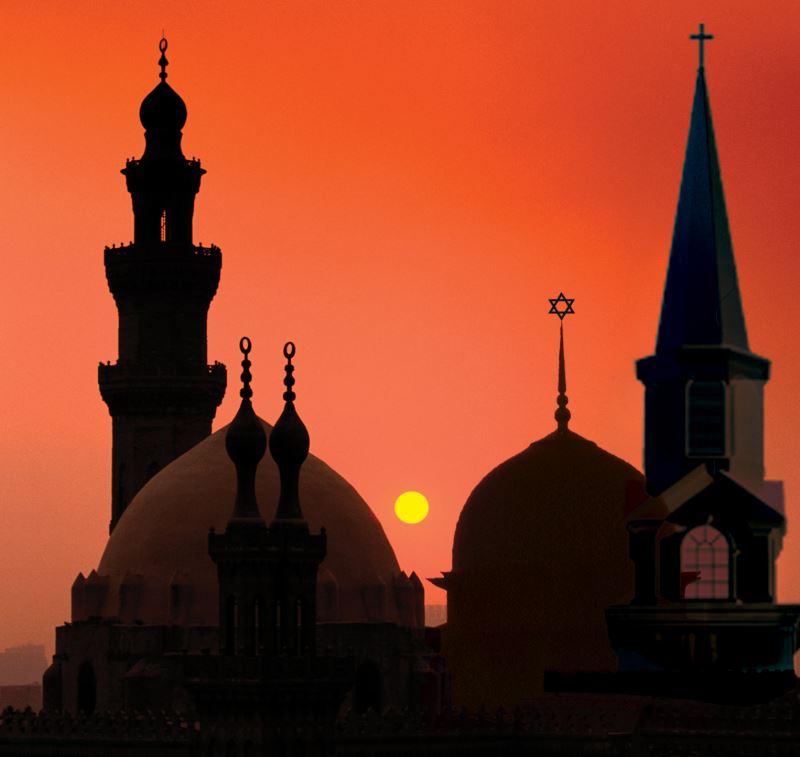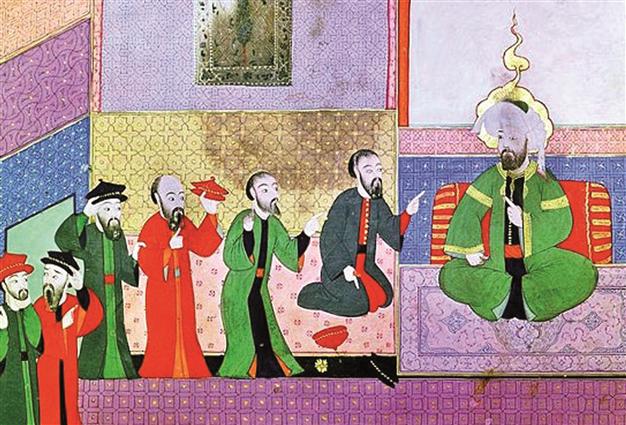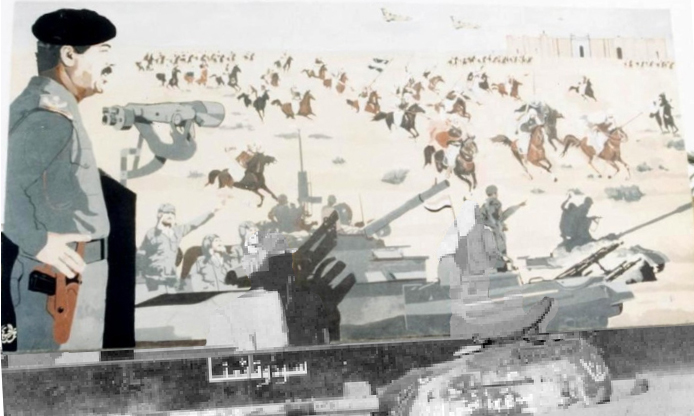DGLnotes—Academic course syllabi
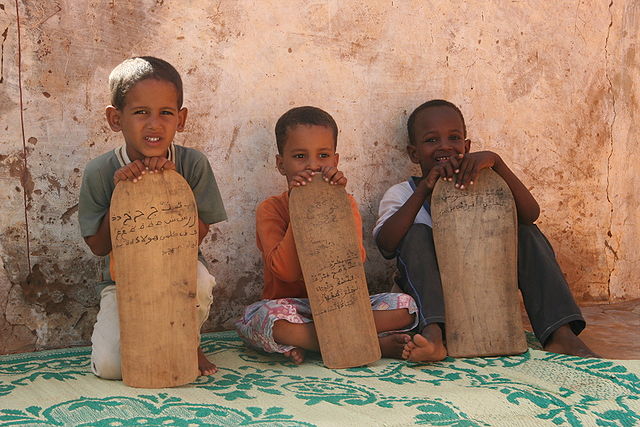
Young pupils at a Qurʾān-reading school (Ar. madrasah) in Mauritania. [Source: Wikipedia.]
The course syllabi below cover courses that I have taught or designed for instruction at a university setting (unless otherwise stated). I have provided interactive versions of the syllabi online, including links (when available) for online primary sources and assigned readings, for the general public interested in learning about these subjects.
Table of contents
Introductory/survey courses

Satellite view of the Middle East. [Source: Wikipedia]
An introduction to the religious and cultural trends of Islam—the faith and the tradition—from the birth of the religion to the present day.
A survey of the history of Iran/Persia from the ancient Achæmenids to Aḥmadī-nezhād (Ahmadinejad), with emphasis on the Arab-Muslim conquest, the rise of Muslim Iranian dynasties in the Ninth and Tenth Centuries, the Ṣafavid and Qājār Empires, and the two major revolutions of the Twentieth Century.
A survey of the history of Zionism and the modern State of Israel from the mid-Nineteenth Century to the present.
A survey of the history of the Ottomans from their beginnings in the late Thirteenth Century to their collapse following the First World War.
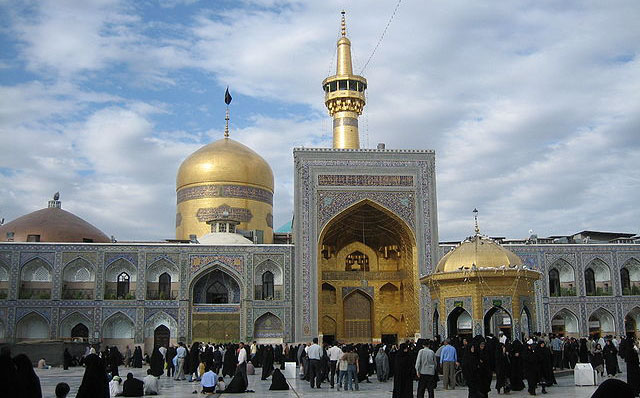
The Emām Reżā Shrine, the largest mosque in the world by dimension, in Mashhad, Iran. [Source: Wikipedia]

‘War’-panel of the Standard of Ur, c 2600 BCE. [Source: Wikimedia Commons]
Higher-level courses
Critical to understanding the modern Middle East is an appreciation of the rôle that religion has played in the societies of the region since Antiquity. In this course, we will examine the way that religion has functioned in Middle Eastern societies, beginning with ancient Near Eastern cultures, including ancient Israel, the Christian Roman Empire, and the Zoroastrian Sāsānian Empire of Iran. We will study the rise of Islam and its own patchwork of religious traditions, as well as the various Islamic societies that emerged—from the earliest Islamic empires to the Ottoman and Iranian Empires. The class will conclude with a thorough look at religion in the Middle Eastern landscape today, covering topics such as religion in Turkey, Iran, and Israel, minority identities, the challenge of nationalism, the Bahāʾī faith, radical Islam, and collective memory. Throughout the course, we will touch upon several recurring themes, including states’ use and abuse of religion, the nature of religion as a primary marker of identity, and varying patterns of religious expression in the region.

Iranians protesting in the aftermath of the fraudulent 2009 elections. [Source: Wikipedia]
The emergence and early rule of Islam greatly shaped the development of not only the Middle East, but of the entire world. This course surveys the birth of the Islamic world, including the genesis of Islam and Islamic civilisation, the profound changes of the Arab-Islamic conquests, and the rise and rule of the first Islamic empires, and continuing until the Mongol Conquest in 1258. We will examine culture, politics, and society in classical Islamic society, as well as the larger historical trends that defined the period. Specific topics of exploration include the rise of Iranian Islamic dynasties, the challenge of the Crusades, the development of Shīʿī and Sunnī Islam, the emergence of Ṣūfī mysticism, and the experience of non-Muslim minorities.
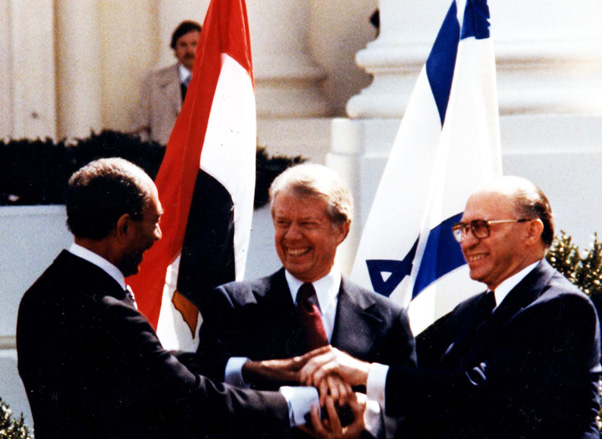
Menachem Begin and Anwar as-Sādāt signing the Israel-Egypt peace agreement, mediated by US President Jimmy Carter. [Source: Carter Center]
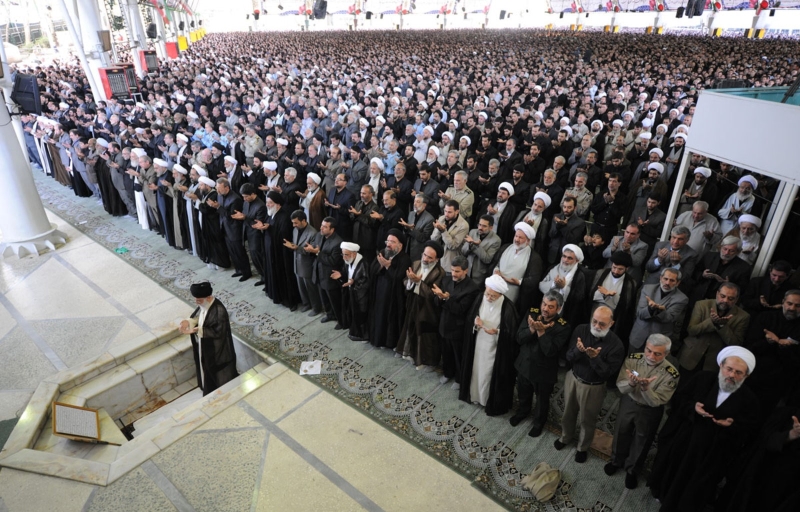
The Supreme Leader of Iran leading Friday prayers in Tehran, 2009. [Source: Office of the Supreme Leader of the Islamic Republic of Iran]

Satellite view of the Middle East at night. [Source: NASA Earth Observatory]
Despite the fact that the Zionist enterprise and its offspring, the State of Israel, have existed for only slightly more than a century, the long history of the Jewish people, the wide dispersion of its members, and the tensions and relations with other inhabitants of the region, have generated a society multifaceted and complex far beyond its short lifespan. In this course, we will chart and analyse the history and development of Israeli society, from its beginnings in the Zionist idea and the culture that existed in Ottoman Palestine during the late Nineteenth Century to the present day. Approaching the subject of Israeli society through the lens of history allows us to observe broad trends and to track changes, not only in its composition, but in its culture, maturity, and impact, as well as to make forecasts about the decades to come. Furthermore, by telling the history of Israel through its variegated, vibrant, and varying society and by studying the topic through a perspective different from most politics-centred approaches, we will obtain a better appreciation of how and why the country, its history, and its people have evolved as they did. Specific groups that we will study include early Zionist pioneers during Ottoman and British rule, Middle Eastern Jewish immigrants, Palestinian-Israelis, non-Jewish communities in Israel (Druze, Bedouin, Bahaʾis, and Circassians), recent Russian and Ethiopian immigrants, and foreign labourers and migrants. We will also examine thematic topics, such as religion and state, gender and sexuality, and contemporary popular culture.
A course focusing on the dynamic between state and minority, both historically and contemporarily, by looking first at the changing rôle of minorities in the last two thousand years and then examining the various minorities—religious, ethnic, cultural—that make up the diverse patchwork of the region.
A survey of the history of Shīʿī Islam, its theological precepts, political developments, and cultural achievements.

Jewish policemen and members of the Haganah establishing the qibbuts Ḥanitah in the Western Galilee, 1938. [Source: Israeli Government Press Office]
Since its founding the early Seventh Century, Islam has maintained a complex relationship to the Jewish and Christian traditions that preceded it. On the one hand, religious figures and texts consciously built upon their monotheistic foundations, linking Muslims to Jews and Christians in worship of the same God, tracing Muḥammad’s genealogical ancestry to Abraham, and alluding in the Qurʾān to stories and messages from the Hebrew Bible and the Christian Gospels. On the other hand, as a successor religion, Islam differentiates itself from the prior traditions in order to provide its adherents with a unique and superseding message. This tension finds expression in the different and differing attitudes towards Jews and Christians—known as ‘Peoples of the Book’ and ‘protected minorities’—in Muslim society. Their experience has ranged widely, including periods of productive harmony, considerable toleration, and harsh persecution. Likewise, Jews and Christians adapted variously to their Islamic surroundings, contributing to their societies in the fields of philosophy, science, trade, culture, and more. In this course, we will survey the major themes of Jewish and Christian lives in the Islamic world from its origins to the present day, with a hope towards understanding better the challenges and realities of the contemporary Middle East.
A survey of the history of the Jewish population of the Ottoman Empire, their relations with the state, their cultural achievements, and their legacy, from the early Romaniotes of Istanbul through the great wave of immigrants following the Spanish Expulsion to the changing patterns of life during empire’s last century.
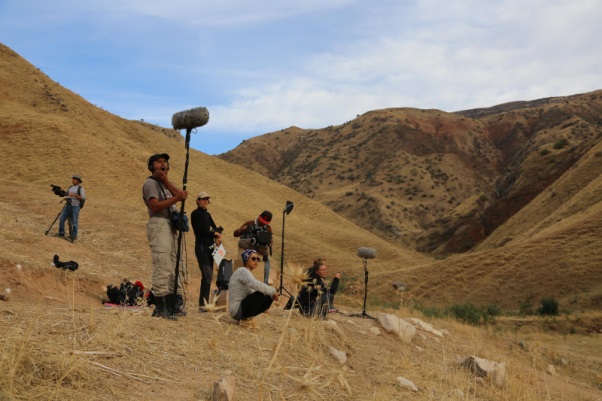
Filming in Afghanistan. [Source: Huck/Adomeit Film]
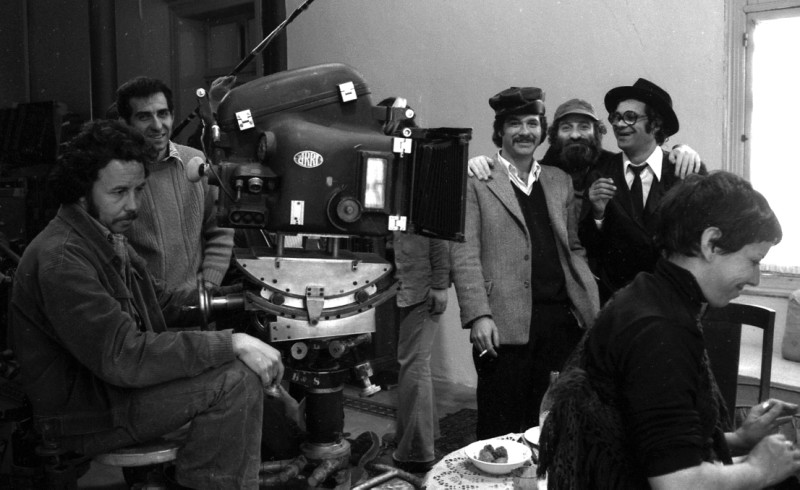
Filming of ‘Ḥagigah ba-Snuqer’, 1975. [Source: Yoni Hamenachem]
A survey of the history of the two most important Islamic ‘gun-powder empires’, examining their origins, their interactions, their relations with Western states, the relationship between state and religion, and their legacies.
An investigation into the dynamic world of Israeli politics, from the pre-state Yishuv to the present-day. The course concludes with a simulation, in which students represent various political parties and compete in a mock election.

The Taj Mahal in Agra. [Source: Wikipedia]
Seminar/graduate courses

Ruins of the royal palace (Ayvān-e Khosrow) in Madāʾin (Ctesiphon), the Sāsānian capital. [Source: Wikipedia]
A course examining the dynamic between nationalism and identity since the former’s inception in the region during the late Nineteenth Century. This includes a survey of the various forms of nationalism, from pan-Arabism to Persian nationalism to Zionism and an investigation of nationalist literature.
Recent scholarship has increasingly focused upon the importance of collective memory in the shaping of modern (and ancient) identities. This advanced seminar will investigate the function of history and memory in the modern Middle East, looking at its interaction with various tensions: religion/secularism (Turkey and Iran), Arab nationalism/particularism (Iraq, Egypt, and Lebanon), and diaspora/nationhood (Israel and the Palestinians). Students will develop a better understanding of how individuals and states have remembered, shaped, and fabricated memories and histories to promote various agendæ, while uncovering trends and similarities that underline their actions and their goals. This course concludes by analysing contemporary developments and discussing collective memory as it applies to the Middle East in the coming decades.
A course examining constitutional movements during the Nineteenth and Twentieth Centuries both in the Middle East and, comparatively, throughout the world.
A course examining Israeli society through several issues and tensions that affect it, including the variegated Zionist ideologies, the challenge of religion and the state, the diversity of Jewish ethnicities, the problem of non-Jewish minorities, the Jewish/democratic question, and the legacy of collective memory.
Since the dawn of Islam, millenarian movements have arisen in anticipation of the ‘Hour’, the Day of Judgement, and the messianic age. This course examines the various traditions of millenarianism within Islam, their history, their development, and their patterns, from the Seventh Century down to the present day. Special attention is also devoted to the Shaykhī and Bābī movements of Nineteenth-Century Iran.
Upcoming talks and lectures
Please note that not all of these events are open to the general audience; please check with the organisers to confirm.
09 September 2025—‘Category imperative: Establishing a Bahāʾī department in the Israeli Ministry for Religious Affairs’ (41st annual meeting of the Association for Israel Studies): Haifa, Israel.
01–03 November 2025—‘“The Arab-Israelite conquest”: Biblical models and the historiography of the Arab-Islamic expansion’ (18th annual conference of the Association for the Study of the Middle East and Africa): Washington Georgetown Marriott Hotel, Washington, DC.

